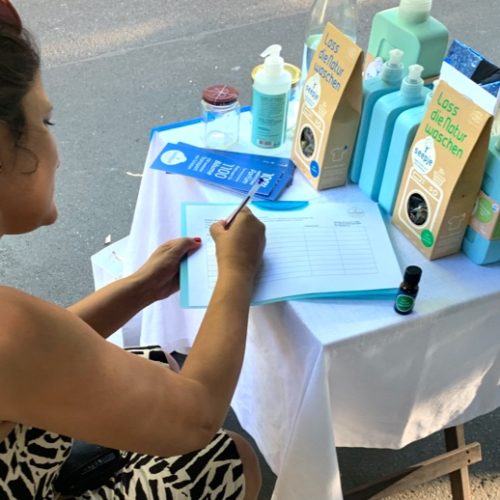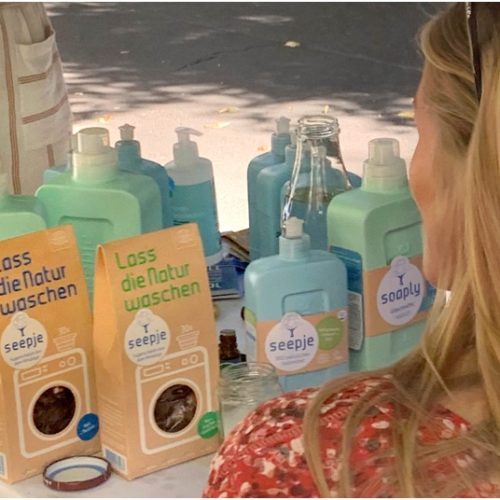What’s the article about:
In this article you will get an overview of common research methods and what you should consider when planning them. If done correctly, a target group analysis enables you to set up tests and MVPs for the market entry faster and more effectively. A few days of target group analysis can make a big difference to your market entry strategy and lead you to success.
Have a coffee or glas of water during this 11 minutes read.
You can compare the work we do at Expansion.eco with the lean startup methodology in which we want to build fast and fail fast. But there’s something really important people tend to forget when they aim for a fast MVP or Market Entry Strategy.
People forget why they want to build fast and fail fast.
We do it because we want purpose brands to learn fast and improve. In order to do so, we have to narrow down what it is we need to learn – and what not. With the main goal in mind: to achieve a successful market entry faster.
Here are the 3 steps that help you build your market entry strategy, your pilots, MVPs and campaigns more specifically to learn faster so that your product reaches your target group, the ethical consumer, as fast as possible.
1. Don’t have 99 problems, start having questions
No matter if you’re already in a market or you’re launching a brand new product, you’ve got problems, and that’s okay. Better even, you should have problems!
Let’s start with your problems by listing them. At Expansion.eco, we’ve heard things like:
- I need to sell X units of Product AB within a year.
- I need to get a listing for the top 5 retailers for Product AB.
- I need to know the size of the prize for Product AB in Germany.
…
Did you list your problems already? How many problems do you have? How specific are they?
Every problem contains questions and questions are good to begin with. Therefore: Ask yourself questions about every problem you’ve listed, especially the ones that help you solve the problem.
Formulate the questions as specifically as possible by integrating what you already know or take for granted. For this step it might be helpful to list beforehand what you already know or see as set, like market references or a target group.
That means for instance, instead of “Where do I sell Product AB?” you’d ask “How many products like Product AB have been sold in Germany last year?” or “How do I make German ethical consumers want to buy Product AB?”.
You might ask the latter question because you are already sure that German ethical consumers are your target group but maybe you will learn that starting with ethical Millennials in the 8 metropolitan regions of Germany as a multiplier for conscious consumer target groups is the better approach. How do you know that? Well, maybe because you have a clever partner at hand or you’re already advanced with your strategy.
Anyhow, for the examples above, you could add the following questions, for example:
- I need to sell X units of Product AB within a year.
- To whom can I sell Product AB? (target group!)
- How to convince my in (a.) identified target group to buy Product AB?
- How much budget did they spend on products like Product AB in the last year in Germany?
- What are the top 5 brands?
…
- Where do they shop?
…
This excersize can be quite extensive, but it is a good exercise to become aware of the scope of the problem. By the way, there are different possibilities here. The gold standard would be a list that is MECE (mutually exclusive (ME) and collectively exhaustive (CE)). However, that might lead too far here.
Let’s focus!
With a little experience, the list can also look like this:
- I need to sell X units of Product AB within a year.
- What is the market for Product AB-like products in Germany?
Volume, competitors, consumer demographics, top points of sales - How will the market develop?
consumer trends, product trends, growing target groups, legislation
..
- What is the market for Product AB-like products in Germany?
It is important that all readers know what questions are behind the keywords. If this is clear, a neat presentation has been found here.
So far so good.
We had 99 problems but now there’s none! (You have 99 questions now that can be answered.)
2. Answers as soon as possible
Now we go for the real thing: Answer the questions efficiently and effectively. Here we go!
The web and things you get for free
First, general data on common markets and products can be found easily on the web. Google and Statista are a solid start. For everything you find, always check the source and data situation. Sometimes the data is thin or results are exaggerated. Keep these things in mind:
- Look for neutral results. If the source is an interest group or concerned party of the issue, take the results with a pinch of salt. How and in what context was the data collected? Were the questions bias-free?
- Look for recent studies. Research that is 4 or 5 years old may be outdated if the products themselves have shorter life or innovation cycles. Think of the year 2020, data from 2019 is hardly true now anymore after such a hard-hitting crisis.
- Look for more than 1 study (take 3 at least!). This is the best way to ensure that the statements are accurate and have little bias. Especially when you read statements in magazines or on company blogs (ours excluded of course 😉), check whether you can find another site with similar statements.

Some sources to work with:
Google Scholar is a good engine to dig deeper into academic research, less for market volume but more for target group insights, social and technological trends.
Established institutions such as the Sinus Institute provide good basic knowledge on target groups and German cohorts. The German Chamber of Industry and Commerce (IHK) as well as ministries such as the Ministry of Food regularly publish market studies that also include consumption trends, such as the annual nutrition report of the Federal Ministry of Food and Agriculture. The latter is published in german only. Anyway a german speaker is advisable to navigate the landscape of German institutes.
Your own quantitative data in an affordable way
If you can’t find your answers on the web, create them! Not by simply making them up of course but you could conduct a survey. That could be for instance to find out why people buy products like the miraculous Product AB.
A call for participation on a well-known portal or in an online magazine can be enough to get the right number of participants (rule of thumb: 150+). If a more precise selection is needed, e.g. according to age, education, income or place of residence, it is best to use recruitment agencies that can be easily found on the Internet. No time for searching, we can help you out.
A few tips on surveys:
- Ask about past behaviour only. Woulda, coulda, shoulda tend to lead to false positives or negatives. People might be sitting on the couch while responding to your survey and are certainly not in the context to accurately predict their future behavior.
- Participants should receive an expense allowance, but nothing more. Otherwise their opinion will be too benevolent or sloppy.
- Keep the survey short. After 15 minutes at the most, attention drops. For professionally recruited participants, the survey can be longer, but deliberate this with the recruitment agency.
- Create a neutral setting. At Expansion.eco we stay neutral during studies to ensure low-biased results. Consider teaming up with a neutral partner or at least disguise your brand during surveys to avoid consumers answering in a tendentious way.
Little tip: Sometimes bigger research agencies have studies available, but not published. Send them your questions and see if they have anything in their database.
Become a gold digger with qualitative research
If you have a question like “What are reasons for metropolitain millennials to buy more home brands this year”, then a survey is simply not enough.


Expansion.eco conducting an acceptance test in summer 2020
To know the reasons for certain behaviour, motivations and views, focus groups and interviews are the way to go. The former takes a little less time and budget, but runs the risk of influencing participants among themselves. Interviews are one-to-one conversations. This is more time-consuming, but with the right questions it provides awesome impulses, the gold we digged for.
Let’s keep the following in mind for the 2 tools:
- No leading questions. What one sets out to do and actual behaviour are different. However, you can show product examples or act through scenarios and ask for feedback on the spot.
- Use open questions. It will give you reasons for behaviour, not just decisions.
- Ask 2, 3, times for the why. This way you get a deeper understanding of the participant, basic motivations, fears and desires.
Tip: “The Mom Test” by Rob Fitzpatrick is a quick read and trains you well in conducting interviews. The video below presents some insights:
Alright, up to this point, we have only asked about past behaviour. How customers react to and use the enchanting Product AB is something we only partially learn in interviews and focus groups.
Everyday life looks different. So what’s next?
3. Launch a ninja pilot from your hypothesis base
We’ve come a long way, didn’t we? It is worth it. Now you are at a point where you know exactly what you still need to know and can start a test designed exactly for that. No messing around, just ninja power!
You had them along the way and you definitely have some in your mind now: assumptions or hypotheses. Write them down! They might look like this:
“Millennials have a short attention span and love rebellious products. Product AB can be sold to Millennials across Germany by placing them on product shelves that have nothing to do with Product AB, in a way that it is surrounded only by products of other categories and it appears to be an alien.” (You’re welcome.)
There are several ways to test such a hypothesis.
What do you think, how many stores would we need for testing?
Would we need a store at all or could we run this more cleverly?
What would a ninja do?
Running pilots and tests is our daily business at Expansion.eco and we’re happy to tell you more in person, if you want to bring an ethical product or purpose brand to Germany.
If you’re just curious how the story continues, stay tuned for our post on Marketing Strategies for Food & Beverages brands or simply subscribe to our newsletter to read it first. Witty Product AB might be thriving…
